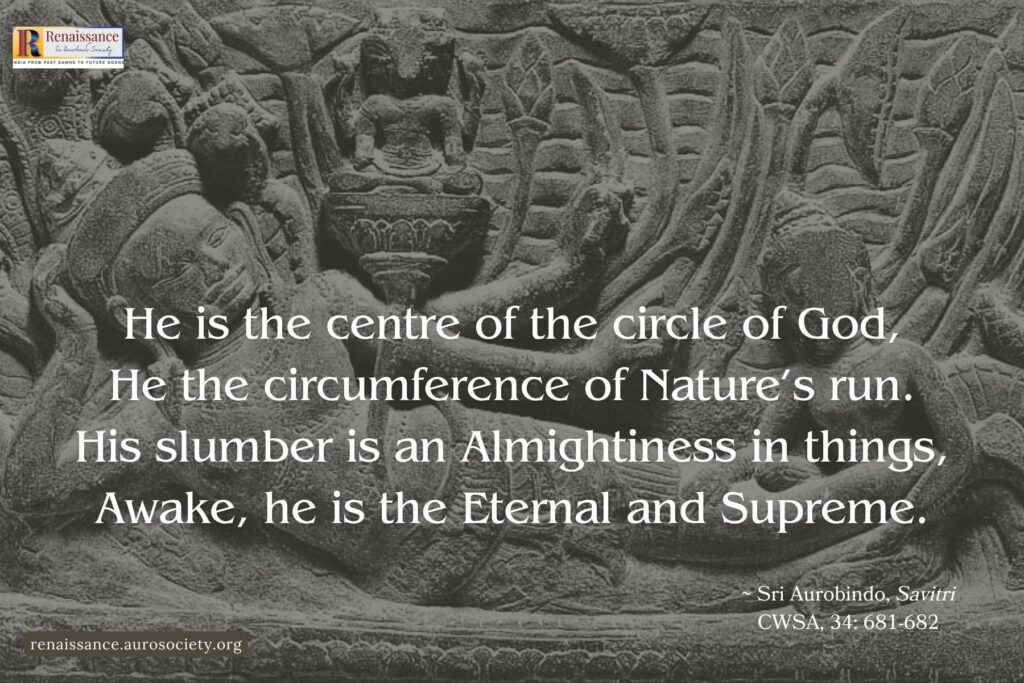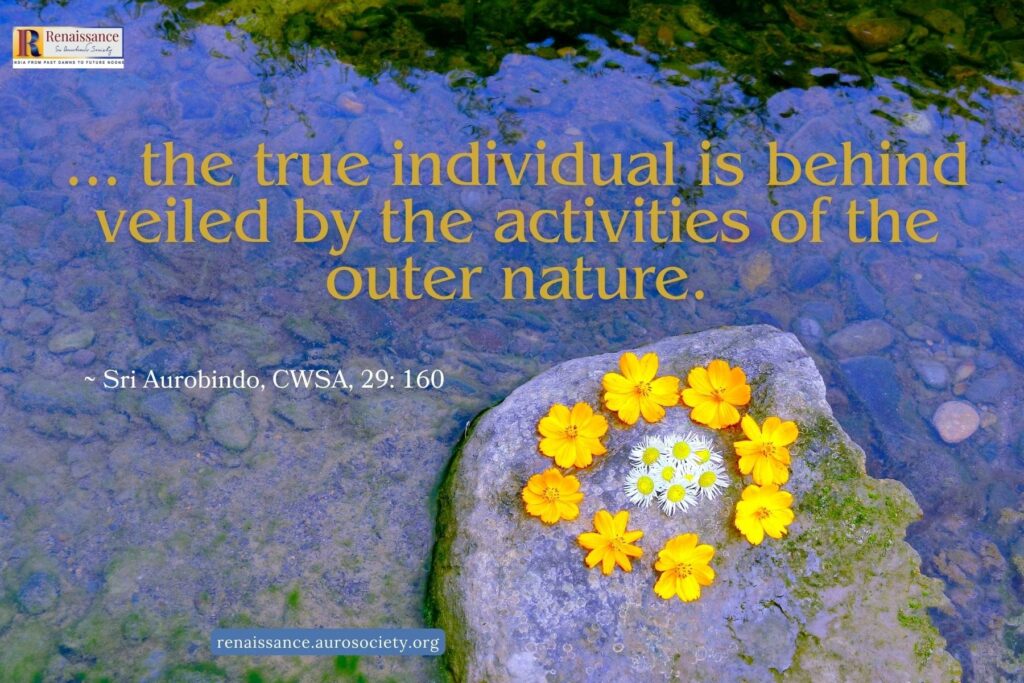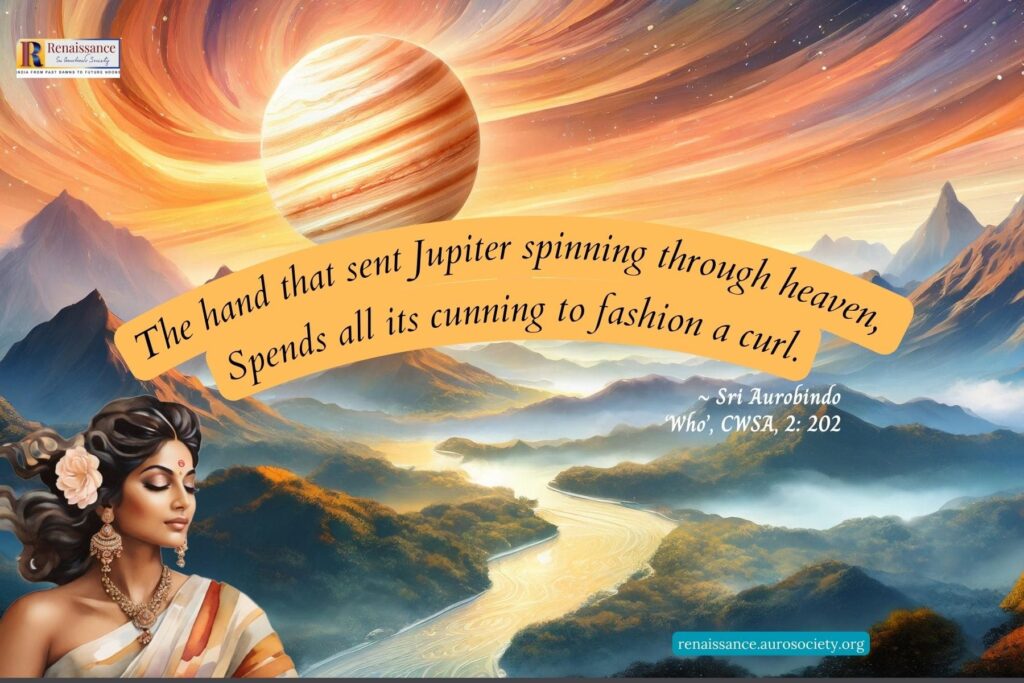From August 2021 to July 2022, every month we took up one of the Twelve Attributes as our theme for the Renaissance issue. We concluded that series with a special issue for August 2022 with the theme – ‘Sri Aurobindo, the Eternal Presence.‘
With our last issue (September 2022), which focused on the theme Conscious Parenting, we started another series inspired by the famous line of Sri Aurobindo – “All Life is Yoga.” The aim remains the same — to dive deep into the works of Sri Aurobindo and the Mother and other senior sadhaks to search for pearls of wisdom which can guide us to work toward a true renaissance of India.
If we have to be reborn as a society, as a nation, if we have to raise ourselves to work toward the true mission of India, to fulfill India’s true destiny, we must grow in Shakti. What is truly necessary to make Indians, and especially the youth of India grow in Shakti?
An obvious answer is: an education that helps build their capacities and capabilities.
Only a strong and capable base, a well-formed ādhāra, can be the right receptacle for the shakti. As the Mother guides us:
Education is certainly one of the best means of preparing the consciousness for a higher development.
~ CWM, Vol. 7, p. 58
National Education Policy (NEP) 2020 has given much hope that at last there will be shedding of the McCaulay’s burden which has plagued Indian education for a long time. There is also a great enthusiasm among many that finally our education will be ‘Indianised,’ something truly necessary for a new India.
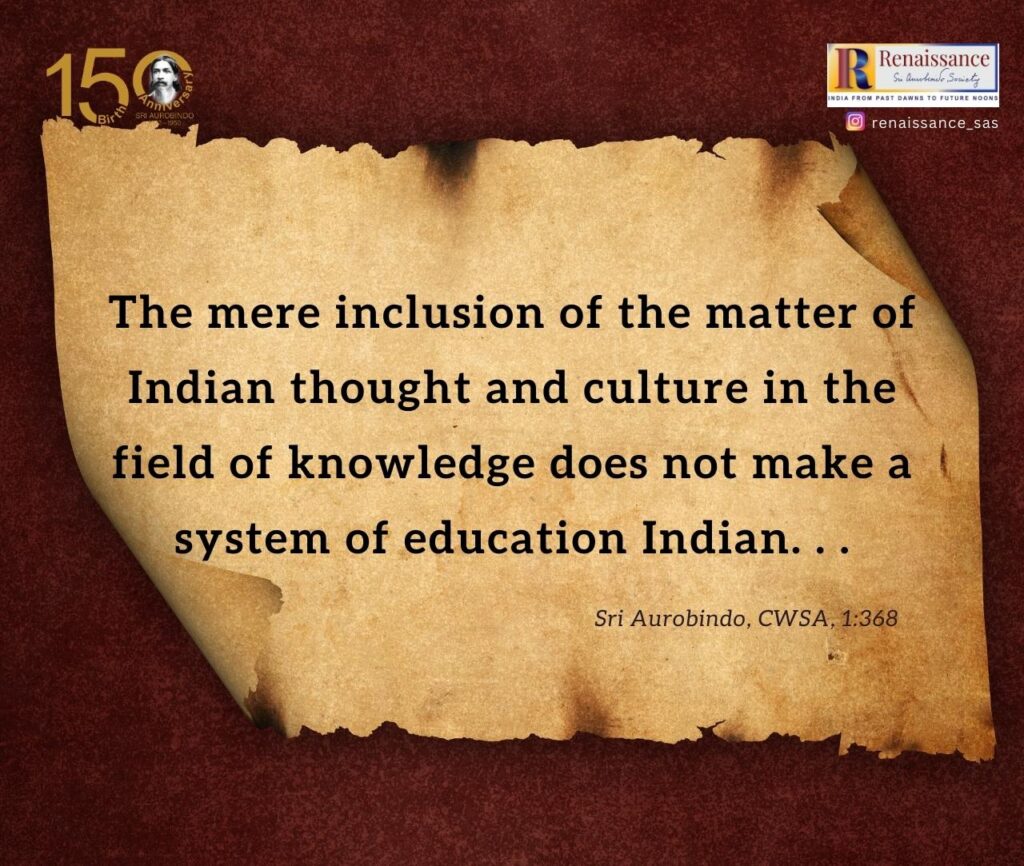
Several aspects of NEP 2020 reflect the vision of National Education as given by Sri Aurobindo and the Mother. This becomes especially clear when we read the policy’s emphasis on holistic education, greater decentralization in decision-making, institutional autonomy, greater curricular choice, rethinking student assessment, revitalizing teacher education and a few more areas.
But a deeper and critical look at NEP 2020 in the light of some fundamentals of Integral Education also reveals several areas where major gaps exist – both in terms of application, and more significantly in acknowledging some of the fundamentals of Integral Education.
In the current issue we explore some aspects that we think are essential for an ‘Education for New Age’.
We are guided by the following words of the Mother:
An integral education which could, with some variations, be adapted to all the nations of the world, must bring back the legitimate authority of the Spirit over a matter fully developed and utilised.
~ CWM, Vol. 12, p. 249
We also find inspiration in these words of Sri Aurobindo:
The mere inclusion of the matter of Indian thought and culture in the field of knowledge does not make a system of education Indian. . .
It is not eighteenth century India, the India which by its moral and intellectual deficiencies gave itself into the keeping of foreigners, that we have to revive, but the spirit, ideals and methods of the ancient and mightier India in a yet more effective form and with a more modern organisation.
~ CWSA, Vol. 1, pp. 368-369
Paying heed to the Mother’s advice that the past must serve as “a spring-board towards the future, not a chain preventing us from advancing,” (CWM, Vol. 17, p. 296), we have curated an issue which explores several themes related to Education that can not only facilitate a true Indian renaissance, re-awaken the Bhārata Shakti, but also help India and the world get ready for a new age, a new world built on a new higher consciousness.
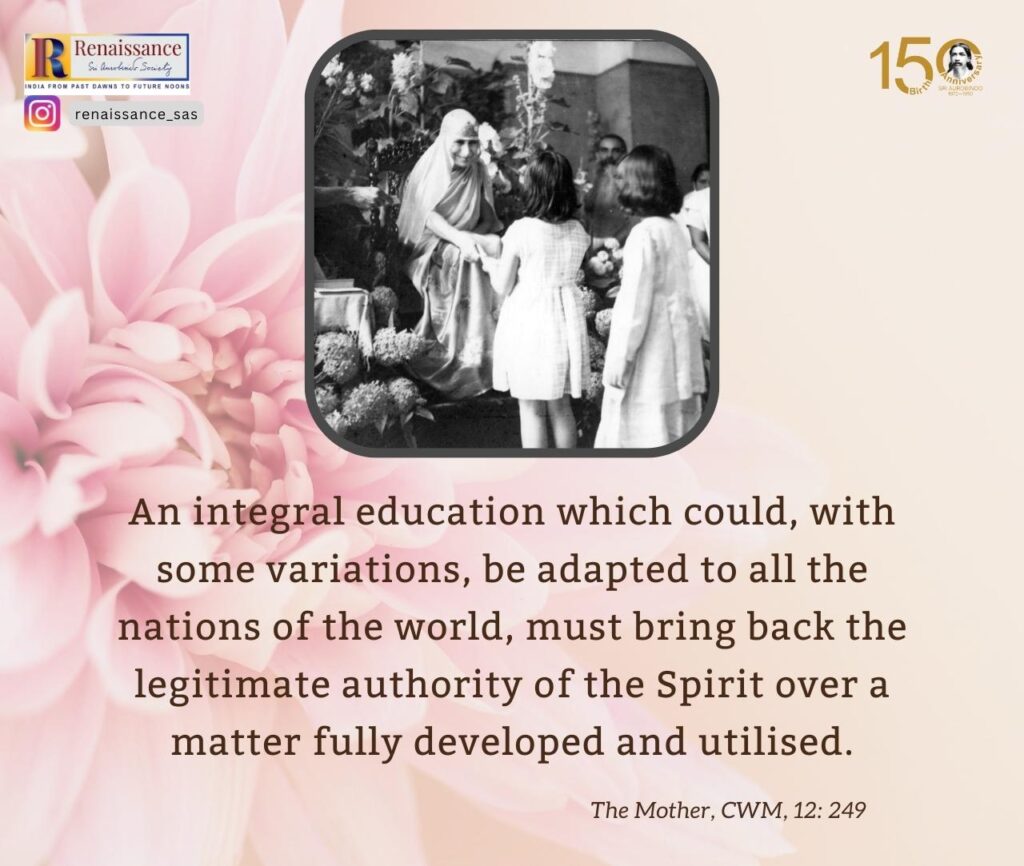
Aims of Education
The most important aim of education, the Mother tells us is – “To know oneself and to control oneself.” She explains further that education must facilitate the learner to become more and more conscious of the different parts of one’s being and their respective functions. But knowing alone is not enough, education must also facilitate cultivation of greater and conscious self-control and self-mastery (CWM, Vol. 4, p. 34).
Sri Aurobindo speaks of three central aims of education:
. . . there are three things which have to be taken into account in a true and living education, the man, the individual in his commonness and in his uniqueness, the nation or people and universal humanity.
It follows that that alone will be a true and living education which helps to bring out to full advantage, makes ready for the full purpose and scope of human life all that is in the individual man, and which at the same time helps him to enter into his right relation with the life, mind and soul of the people to which he belongs and with that great total life, mind and soul of humanity of which he himself is a unit and his people or nation a living, a separate and yet inseparable member.
~ CWSA, Vol. 1, p. 425
We see three equally significant units here – individual, nation, and humanity – which must be the concern of a true and living national education. An education rooted in the deeper aim of ‘knowing oneself’ is absolutely indispensable. A true knowledge of who we are as individuals, in the complexity of our being, is essential for us to become more conscious of our choices and decisions in life. This is how we become not only responsible and creative citizens but also more conscious and well-balanced individuals walking on the path of a conscious evolution of the human race.
Watch:
Three Central Aims of Education
These thoughts have been our inspiration as we selected a few passages from the Mother for our two Guiding Light features for this issue, titled Why a New Education for Future and A True Education for India’s Future.

Individual, not a single entity
An individual is not a single entity, but rather a complex being with different parts intermixed and interacting with one another. Indian yogic psychology speaks of the double nature of human beings. Ordinarily human beings primarily live in their outer nature and know themselves only through the ego-self.
Behind the surface or frontal consciousness of the outer being there is an inner or subliminal consciousness. And behind the inner being is the true, inmost being, which is a spark of the Divine Presence within the individual. This inmost part is often called soul, but in Sri Aurobindo’s terminology is referred to as psychic being.
The external nature is determined by an intermix of three components – mind, life, and body, constituting the three parts of the outer being – the mental, the vital and the physical. Though separate and distinct, these three main divisions of the outer being are interconnected. Thus, we have several subdivisions interacting with one another.
Only through close self-observation and sincere analysis one can discern the workings of these parts. Each part has its own nature or even different natures contained in the same part. And each part tries to assert its dominance and act according to its own preferences, likes and dislikes. This is what leads to a sense of ignorance about why we behave in a certain way or feel a certain emotion or sensation. This ignorance leads up to a sort of inability to gain mastery over ourselves.
The path to knowing oneself begins by knowing the working of these parts and becoming conscious of their movements. This necessitates constant self-observation. More important is a sincere examination of our motivations for all that we choose to do or not do. The more we know about ourselves, the greater the self-control and self-mastery we can gain.
Facilitating such self-awareness for the learners must become one of the most essential goals of education.
One of the often neglected areas in mainstream education is that of the vital part of one’s being. Children need proper education in sublimating the lower vital impulses, and also in refining and purifying the different instincts of the vital. This is important if the vital has to become a true instrument in their overall growth and development as a human being.
The Mother speaks of two principal aspects of vital education:
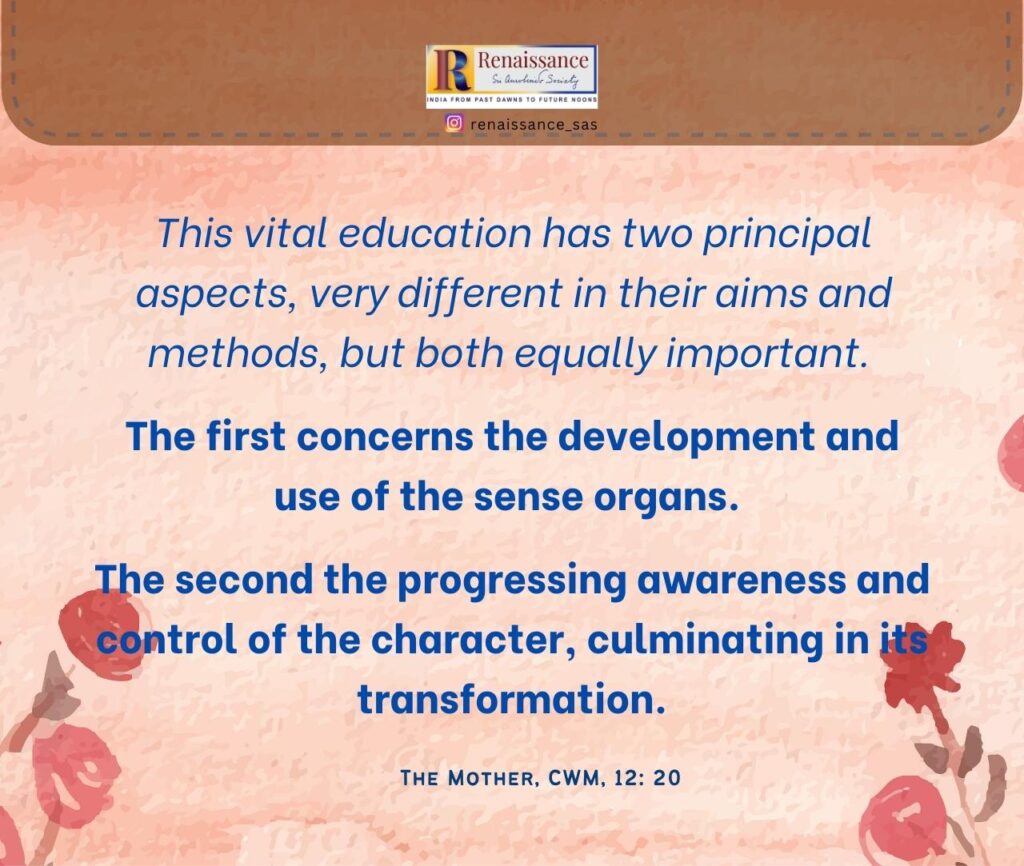
Sri Aurobindo’s words on Education for Character Development give us clear guidance with regard to the second aspect. Another feature titled The Mother’s Guidance on Dealing with Undesirable Influences and Tendencies in Children highlights a few fundamentals for how teachers could facilitate impulse-control in children, particularly the impulses of violence and sex.
With regard to the first aspect – development and use of the sense organs, the Mother emphasises that such education must begin as early as possible, as soon as a child is able to use his or her senses. This will help prevent the formation of many bad habits.
Learning activities which involve the use of close and clear observation, refining one’s speech, developing deep listening facilitate proper development of different sense organs. This can help the person attain a greater precision and power of functioning of his or her senses.
A good vital education also gives equal emphasis to the cultivation of a sense of discrimination and of the aesthetic sense. It is important to give learners opportunities to develop the capacity to choose and adopt what is beautiful and harmonious, simple, healthy and pure.
Beauty and harmony of the sensations leads to better psychological health.
We address this issue in our Insightful Conversation feature in which an art educator speaks of the role of art education in facilitating a deeper inner harmony in the learner.
With regard to mental education, the focus must be more on development of faculties instead of merely transmitting information to the learners. It is important to engage learners in activities which can help develop their instruments and faculties of observation, analysis, reasoning, imagination and expression.
Schools must determine their curricula, pedagogical approaches and assessment methods keeping this purpose in consideration. Introspection, journaling, quiet contemplation, self-analysis and other such inward-oriented exercises must become regular part of learning experience. To emphasise this point further, we highlight in the current issue excerpts from Neeltje Huppe’s book which speak of the need for new assessment methods in classrooms.
In the hands of a good teacher, every subject can become a means for the learner to know a little bit more of himself or herself.
Sri Aurobindo’s integral yoga psychology tells us that the inner or subliminal being also has an inner mind, an inner vital and an inner physical. These are in touch with the corresponding universal planes of existence. The outer being knows things only indirectly from their outer touches as perceived though the senses and the outer mind.
But the inner being is directly aware of the surrounding universal forces that act upon and through us. The inner being receives the contacts of the environing world though the environmental consciousness. This is why it is important to develop a deeper awareness about the nature of the working of this inner being.
It is through this [environmental consciousness] that the thoughts, feelings etc. of others pass to enter into one — it is through this also that waves of the universal force — desire, sex, etc. come in and take possession of the mind, vital or body.
~ Sri Aurobindo, CWSA, Vol. 31, p. 601
Even a sufficient mental awareness of the working of this inner being can be beneficial.
It helps the growing mind appreciate the need for developing a sense of discernment when it comes to external contacts. By gradually taking charge of the suggestions and influences that enter into one’s being, one progressively develops a more conscious sense of individuality.
The Psychic Entity
The outer and inner beings are both supported by an inmost being. Sri Aurobindo and the Mother speak of it as the “psychic”. The psychic entity is a spark or portion of the Divine present in all things and creatures. In the human being, in the course of evolution, it grows into an individual psychic personality and is called the psychic being.
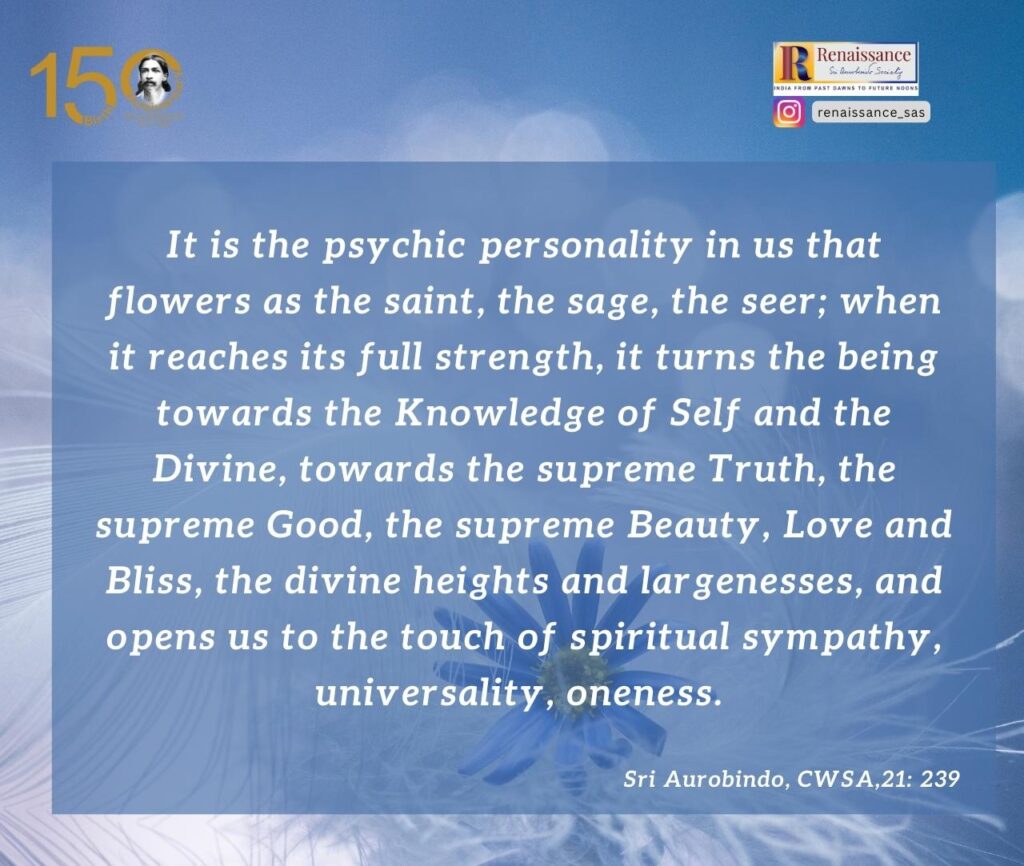
Indian spiritual psychology speaks of the ātman, the Self. This Self is unborn and stands above the evolutionary process and is unaffected by it. The psychic being is a projection of this ātman; it is the evolving soul. Though immortal in its essence, it passes through cycles of physical birth and death, growing from life to life. It expresses itself through its instruments of mind, life and body. And it evolves as these parts are developed through life experiences and education. But for a long time, it exercises a concealed, partial and indirect action on these instruments.
Sri Aurobindo describes the true role and purpose of the psychic being in the evolution of human being:
It is this secret psychic entity which is the true original Conscience in us deeper than the constructed and conventional conscience of the moralist, for it is this which points always towards Truth and Right and Beauty, towards Love and Harmony and all that is a divine possibility in us, and persists till these things become the major need of our nature.
It is the psychic personality in us that flowers as the saint, the sage, the seer; when it reaches its full strength, it turns the being towards the Knowledge of Self and the Divine, towards the supreme Truth, the supreme Good, the supreme Beauty, Love and Bliss, the divine heights and largenesses, and opens us to the touch of spiritual sympathy, universality, oneness.
~ CWSA, Vol. 21, p. 239
All that is genuinely beautiful, noble, right and true is an inherent quality of this psychic personality in us.
The more the psychic entity, this divine spark grows and evolves in us, the more these high and noble qualities grow in us. When we aspire for Beauty, Truth, Good, Right, Love and Harmony, it is the psychic in us that aspires.
Shouldn’t education’s highest goal be to facilitate the gradual evolution of this inmost divine spark within each learner?
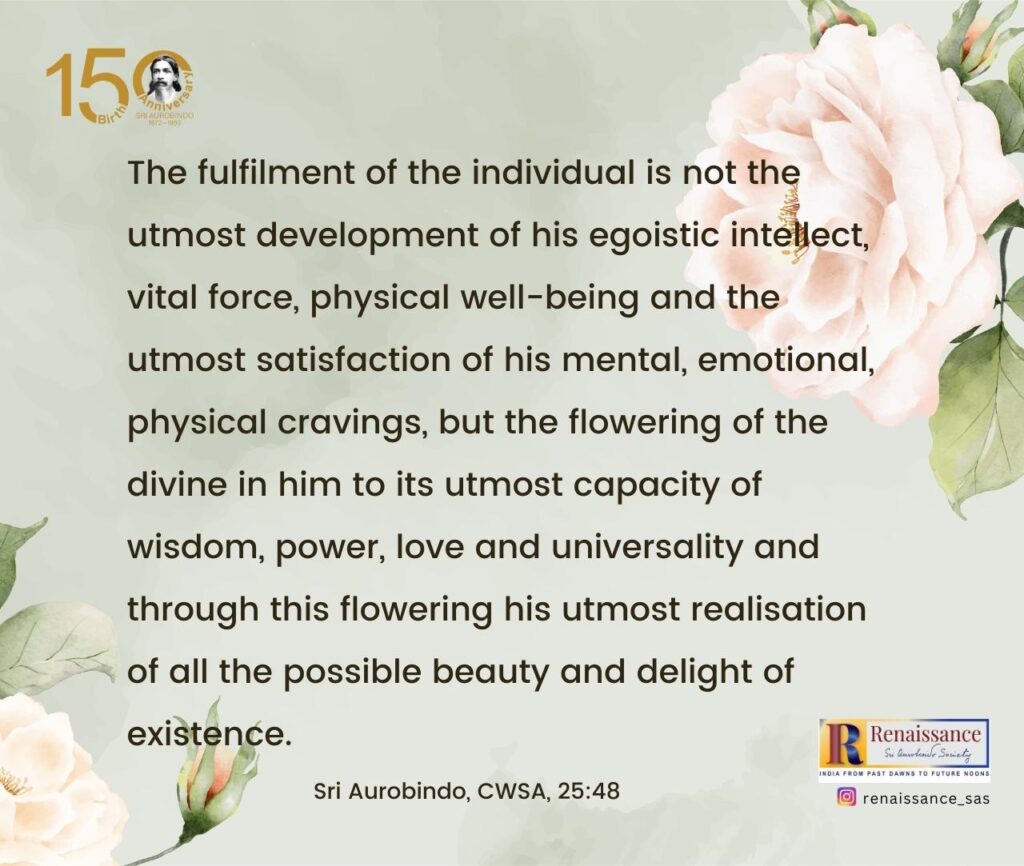
What does this mean for an education necessary for true resurgence of Indian spirit?
That it must give great value to appropriate care, growth and cultivation of the mental, intellectual, ethical, dynamic, aesthetic and physical parts of the being. At the same time, it must also recognise that all these are powers of a soul which manifests through them and evolves with their growth. This is how an individual gradually ascends to his or her ultimate divine self–hood.
Education must create an awareness of and facilitate an opening in young minds and hearts to the fact that there is a personal inner truth. And this truth is independent of and transcends all the layers of outer identity of the individual. And also, that the discovery of this inner truth through intense self-search and deep self-knowledge is a fundamental aim of human life.
Seen in this light, all life becomes education, as we walk the path of discovering and realising the aim of our life – individually and collectively.
These different strands of thought are further elaborated upon in some of our features in this issue.
‘Insights from Indian Psychology for Personality Development of the Learner‘ by Kireet Joshi highlights Indian understanding of human personality and its perfection that must form the basis of education. It is also critical to know the fundamentals which formed the basis of our educational heritage.
The essential principle on which a great intellectual superstructure can be built, that fundamental basis of the ancient vision of true education of soul and mind, according to Sri Aurobindo, was the all-important discipline of brahmacharya. The three-part essay titled ‘Back to Basics, Lessons for Future‘, summarises Sri Aurobindo’s detailed explanation of brahmacharya as a system of human energy management. It also explores its relevance for today’s and tomorrow’s educational context.
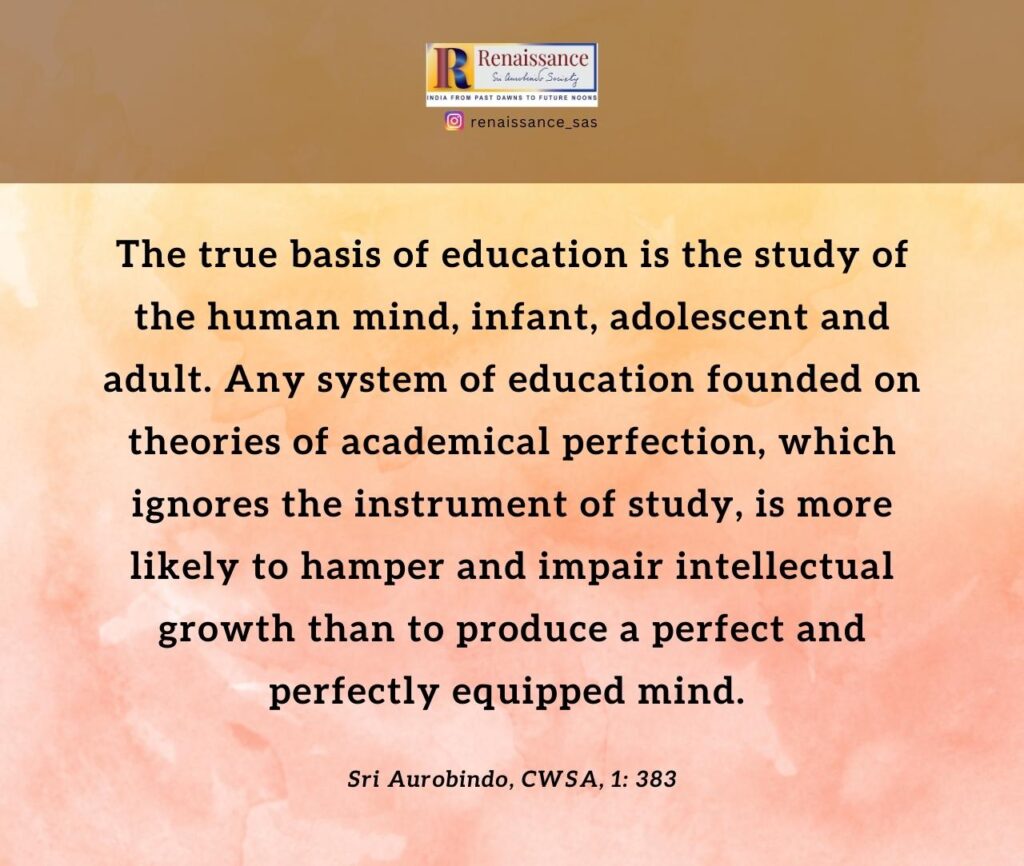
A teacher’s role in any educational context can never be over-emphasised.
In the feature titled ‘Spirituality in Education: A Few Fundamentals‘, we highlight a few responses of the Mother to questions and clarifications asked by some teachers concerning meaningful integration of spirituality in the teaching-learning context. Here we also find important hints on the role of teachers in the conscious development of the students.
Selections taken from one of Pavitra’s writings on education speak of the true attitude of a teacher in the light of Sri Aurobindo’s first principle of true teaching — Nothing can be taught. Nolini Kanta Gupta’s essay elaborates what is meant by the Mother’s statement that a true teacher must be a yogi.
The feature titled ‘What Matters is the Consciousness with Which You Teach‘ presents a few passages from the Mother’s correspondence focusing on issues concerning pedagogical approach and maintaining discipline in the classroom.
The Tales and Stories section features a delightful story told by the Mother. It speaks of what a real initiation means and how a guru prepares a shishya for receiving higher knowledge. The Mother used stories most effectively to orient the growing children’s minds and hearts to higher values. She also encouraged a small group of children to write stories. One story written by Tara Jauhar in her early teens is featured in our offering titled ‘Stories for the Children, by the Children: True Courage‘.
While we feature richly varied content in Renaissance, the soul of this online publication remains the Words of Sri Aurobindo and the Mother. Several people remark that it is not easy to read Sri Aurobindo. Sometime back we received a submission from Narendra Murty, a volunteer at Sri Aurobindo Society. It is a reflective account of his experience of reading Sri Aurobindo’s writings. We feature his essay in two parts in the present issue and hope some of our readers will find it helpful.
We conclude the 1984 essay by Prema Nandakumar on Sri Aurobindo’s Interpretation of Indian Culture through the Ramayana. From the next issue, we shall begin serialising her essay on the Mahabharata.
As always, we offer this work at the lotus feet of Sri Aurobindo and the Mother.
In gratitude,
Beloo Mehra (for Renaissance Editorial Team)

~ Design: Beloo Mehra

